Living in a conservation area: Ten things you need to know
Conservation areas have been protecting Britain's most beautiful areas for 50 years – here's what you need to know if you live in one, or are thinking about moving to one.
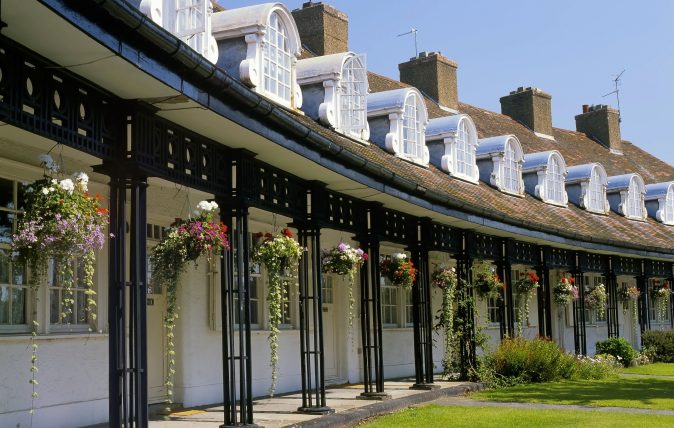

For advocates, conservation areas have been responsible for preserving some of England’s finest examples of built heritage. Critics grumble that they allow local planners too much power over seemingly inconsequential matters such as downpipes and tree heights. Yet whichever side of the fence you're on, there's no denying the impact that conservation
‘It’s impossible to put a figure on the value of conservation areas today,’ says Chris Surfleet of Bidwells, who recently hosted a conference in Stamford to examine the legacy.
‘What is clear is that they’ve played a massive role in protecting the places that we find special to live in or to visit.’
Here are ten things you should know if you live in – or are thinking of moving to – one of our country’s beautiful conservation areas.
Conservation areas have been with us for half a century
This year marks the 50th anniversary of the Civic Amenities Act 1967, which saw the introduction of the first conservation areas in the UK. The idea of introducing preservation orders on some of the best examples of urban and village built heritage had already been mooted in the early 1960s.
A total of 51 ‘gem towns’ were identified by the Council for British Archaeology in response to widespread road expansion projects taking place around the country – among other examples was the loss of heritage assets in Worcester following the development of the town centre.
The first conservation area wasn’t one of the obvious forerunners
The original intention was for the first conservation areas to be created in the 51 ‘gem’ towns originally identified, a list which included York, Chester, Chichester and Bath. But thanks to the efforts of a dynamic planner in Stamford who embraced an early pilot scheme, it was the Lincolnshire market town that led the charge.
Sign up for the Country Life Newsletter
Exquisite houses, the beauty of Nature, and how to get the most from your life, straight to your inbox.
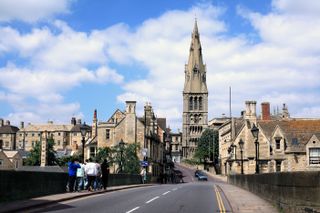
‘Stamford was quickly followed by the “big four” and then many more,’ explains Chris Surfleet of Bidwells, who recently hosted a conference in Stamford to examine the legacy.
‘It’s impossible to put a figure on the value of conservation areas today,’ he adds.
‘What is clear is that they’ve played a massive role in protecting the places that we find special to live in or to visit.’
There are over 10,000 conservation areas in Britain today
The bulk of the conservation areas are in the South-East – in London alone, there are more than 1,000 – and the North-East has the fewest.
And it’ll be no surprise to hear that the Cotswolds boasts 144 conservation areas – the highest number of any district local authority in England. In total, there are over 10,000.
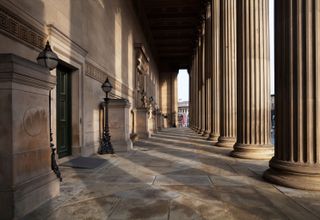
That seems a huge number, but Chris Surfleet cautions against suggesting that there are too many. ‘It’s easy to forget what was happening in the late 1960s, in terms of road schemes barrelling through town centres and scores of Georgian buildings being torn down to make way for them,’ he says.
Conservation areas often don’t cover buildings… and they don’t always cover the buildings you’d expect
Contrary to popular assumption, the majority (59%) of conservation areas cover open spaces rather than historic buildings, but their breadth is considerable, from coal mines to cafes and from parts of the Yorkshire Dales National Park to the Duxford Airfield in Cambridgeshire.
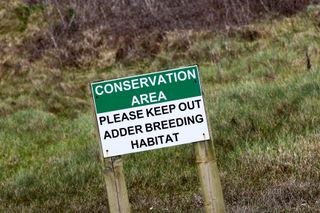
This is an example of heritage being ‘democratised’, according to architectural historian Tom Dyckhoff, who claims that they ‘reflect not just the chocolate-box image of England, but the way culture has evolved in all respects.’
There is a fine recent example in Lincolnshire of exactly this: after a high-profile campaign to prevent demolition last year, Grimsby’s historic fishing docks have been named a conservation area.
The Kasbah, as the docks are known, is a network of warehouses, smokehouses and shops on streets that date back to the 1870s, a memory of a time when the town was ‘the greatest fishing port in the world’.
They’re not intended to keep things completely unchanged
Take the Jewellery Quarter in Birmingham, for example. The area has been selected for a £500 million joint investment by Galliard and Apsley House Capital to turn a three-acre site into flats, restaurants, workshops and a flagship restaurant. And its protected status has ensured that the work will be high quality, as Chris Surfleet says, explaining that the area is ‘not classically beautiful, but its status has been used as a lever to ensure good-quality regeneration.’
Gerard Nock of Apsley House Capital says that they have been at pains to do things right: ‘We are in constant consultation with planners and the local society to ensure the masterplan respects the Jewellery Quarter’s intrinsic character.’
It’s actually very easy to designate a conservation area
The process of creating a new conservation area is rather straightforward. Either a local authority or one of a few other bodies has the right to designate one; and any member of the public can put forward a suggestion, which then needs to go through a review process.
Once established, the area will have an advisory committee – known by detractors as the infamous ‘taste police’ – that considers the appropriateness of any proposed developments. That can cover anything from cutting down a tree to replacing a front door or window.
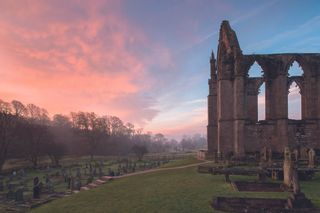
They answer to a higher authority
Historic England keeps an eye on conservation area advisory committees, whether that means reining in excesses or prompting higher standards if they’re becoming too lax. In 2009, for example, Dr Simon Thurley of English Heritage (as it was then known) declared that conservation areas were suffering from ‘a plague of plastic windows’.
If you live in a conservation area and want to have a say, you can. Many local authorities have advisory committees, made up of residents and business owners; you can search for groups in your area on www.civicvoice.org.uk.
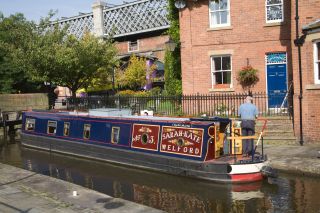
Conservation areas boost property prices
Take Stamford’s attractive Georgian centre as an example. According to Savills research for Country Life, properties within the Stamford Conservation Area are 22% more expensive than those in the wider area. In the 24 months to June 2017, the average price for a property within the area was £365,660, compared to £299,296 outside.
That pattern is replicated elsewhere, albeit not at such a large premium. Historic England worked with the London School of Economics on their own research on the effect conservation areas have on house prices, concluding that properties in conservation areas are thought to be 9% above average, growing at a rate that exceeds comparable properties elsewhere by 0.2% a year.
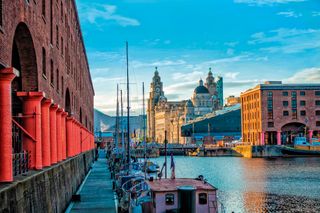
Buyers need to be careful what they’re getting into
For Jonathan Bramwell of The Buying Solution, the existence of conservation areas is a double-edged sword for his clients.
‘Most want to live in an attractive area and like the idea of the views from their windows being preserved, but there is a downside when it comes to doing any work on the house,’ he explains.
‘If a client has particularly ambitious plans, it’s my job to perhaps steer them away from villages that are known to be extremely protective.’
You can get most of the benefits without the down sides
Jonathan Bramwell believes that you can find the best of both worlds. ‘My advice would be to buy on the edge of a conservation area,’ he says. ‘Then you get all the benefits of living next to a very pretty part of the countryside without the restrictions.’
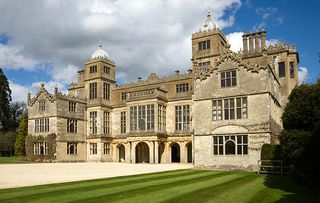
Credit: Alamy
Buying a listed building: The dos and don’ts you need to know
Buying a listed property in need of restoration is not for the faint of heart, but follow these few simple
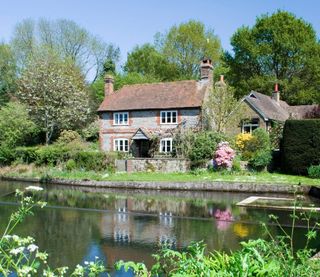
Credit: Alamy
Seven golden rules for selling a country house
With coronavirus now seemingly past its peak in Britain, we're tentatively beginning to look ahead to how life will get
-
 Polestar 4: Function, form and a sprinkle of stardust
Polestar 4: Function, form and a sprinkle of stardustPolestar's latest offering builds off a steady and reliable platform and finally adds the missing ingredient — a little bit of flair
By James Fisher Published
-
 Six wonderful rural homes for sale, as seen in Country Life
Six wonderful rural homes for sale, as seen in Country LifeOur pick of the best homes to feature in Country Life over the past week includes a grand Sussex estate and a delightful riverside home.
By Toby Keel Published
-
 Six wonderful rural homes for sale, as seen in Country Life
Six wonderful rural homes for sale, as seen in Country LifeOur pick of the best homes to feature in Country Life over the past week includes a grand Sussex estate and a delightful riverside home.
By Toby Keel Published
-
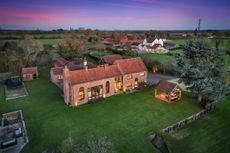 A five-bedroom former farmhouse brought to life with one of the finest living rooms we've seen
A five-bedroom former farmhouse brought to life with one of the finest living rooms we've seenGlebe Farm in Nottinghamshire has undergone an astounding restoration to create a very special home.
By James Fisher Published
-
 A five-acre estate at the heart of the 'prettiest village in Leicestershire'
A five-acre estate at the heart of the 'prettiest village in Leicestershire'Horninghold Hall is the jewel in the crown of Horninghold.
By Penny Churchill Last updated
-
 A wetsuit room, fingerprint entry and coastal views from all the principal rooms: Is this the ultimate Cornish holiday home?
A wetsuit room, fingerprint entry and coastal views from all the principal rooms: Is this the ultimate Cornish holiday home?Sitting pretty overlooking Polzeath Beach in North Cornwall, Megizzy’s spectacular views, contemporary design and well thought out features are hard to beat.
By Annabel Dixon Last updated
-
 Inside Audrey Hepburn's exquisite Alpine retreat
Inside Audrey Hepburn's exquisite Alpine retreatViews of the mountains, 40 acres of gardens and grounds and 10,000 sq ft La Paisible is a subtle yet spacious country home.
By James Fisher Published
-
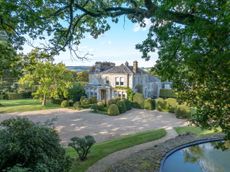 A gorgeously-secluded country home just outside Sevenoaks with world-class equestrian facilities
A gorgeously-secluded country home just outside Sevenoaks with world-class equestrian facilitiesBroomsleigh Park is a seven-bedroom delight, with 18 acres of gardens, that has just undergone an extensive restoration.
By Penny Churchill Published
-
 A quirkily exotic townhouse for sale that is the former home of Edwin Lutyens' nephew
A quirkily exotic townhouse for sale that is the former home of Edwin Lutyens' nephewThe rich architectural tradition of One Port Hill is improved on by its current owners to create a family home of real excitement and fun.
By James Fisher Published
-
 Thatched perfection in a three-bedroom cottage near Chichester
Thatched perfection in a three-bedroom cottage near ChichesterThe Thatched Cottage in Nutbourne does everything it says on the tin, and a bit more.
By James Fisher Published
